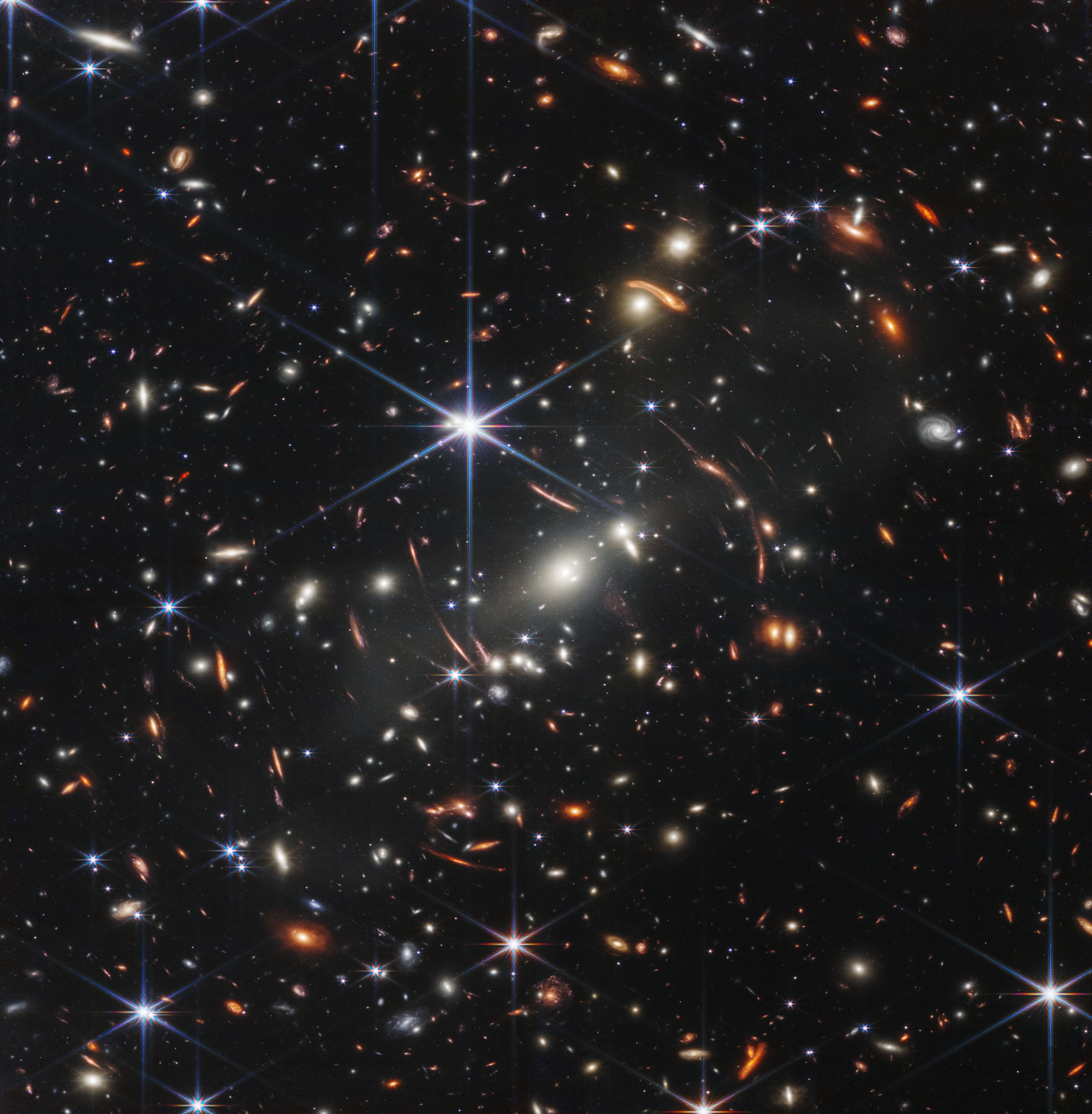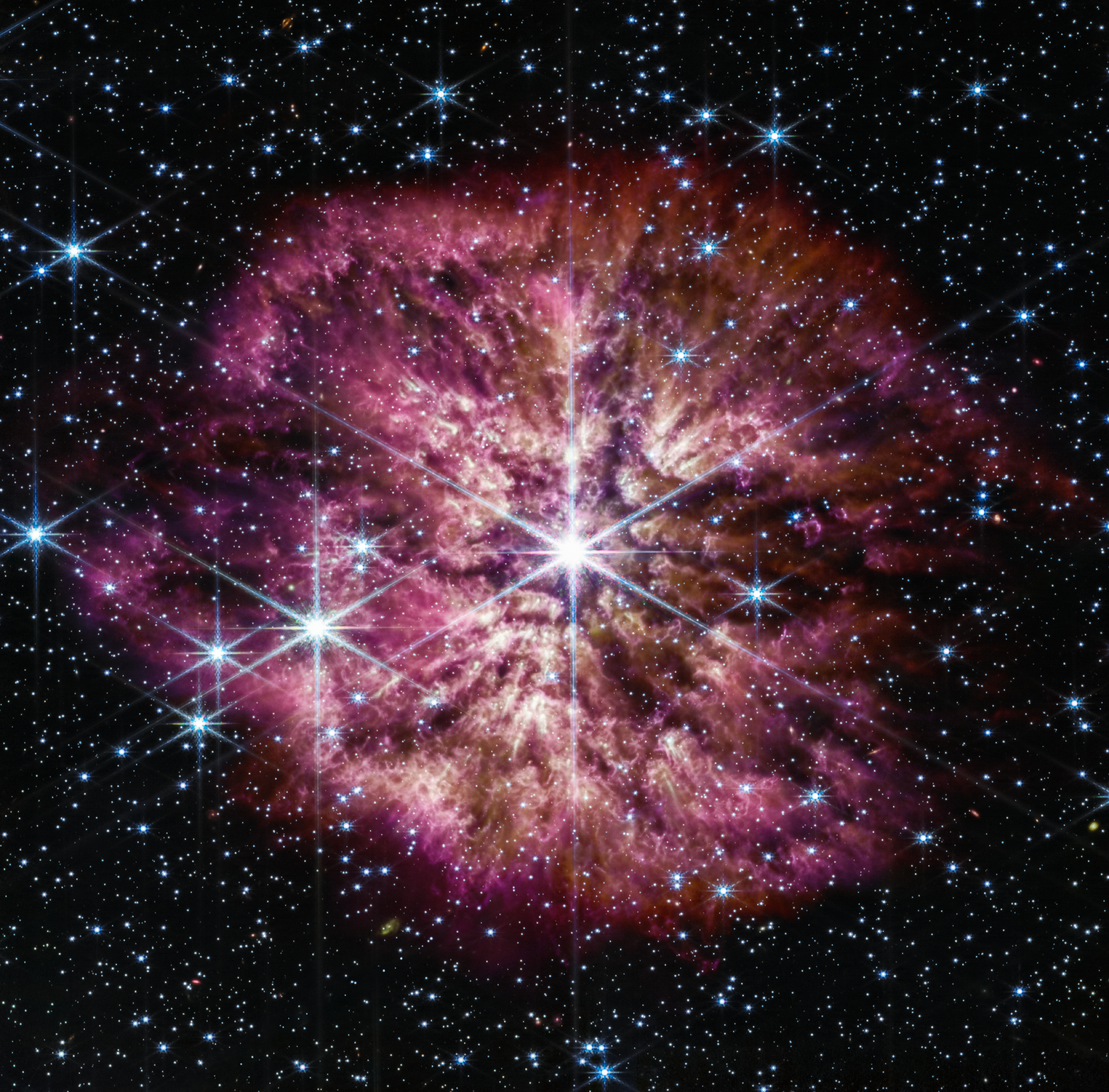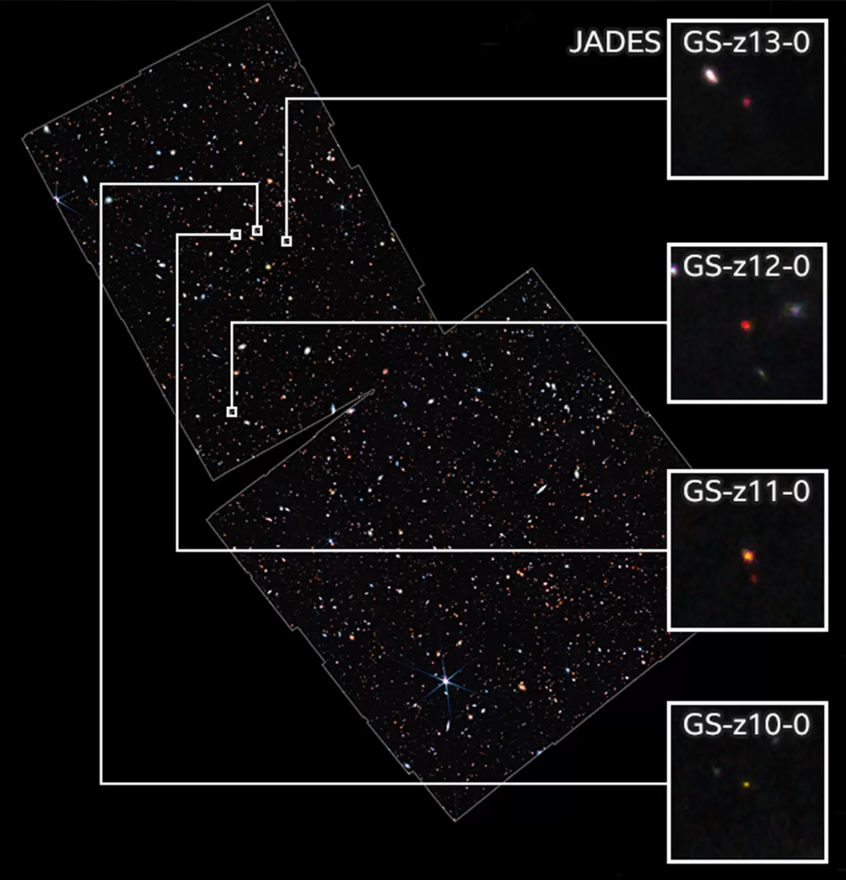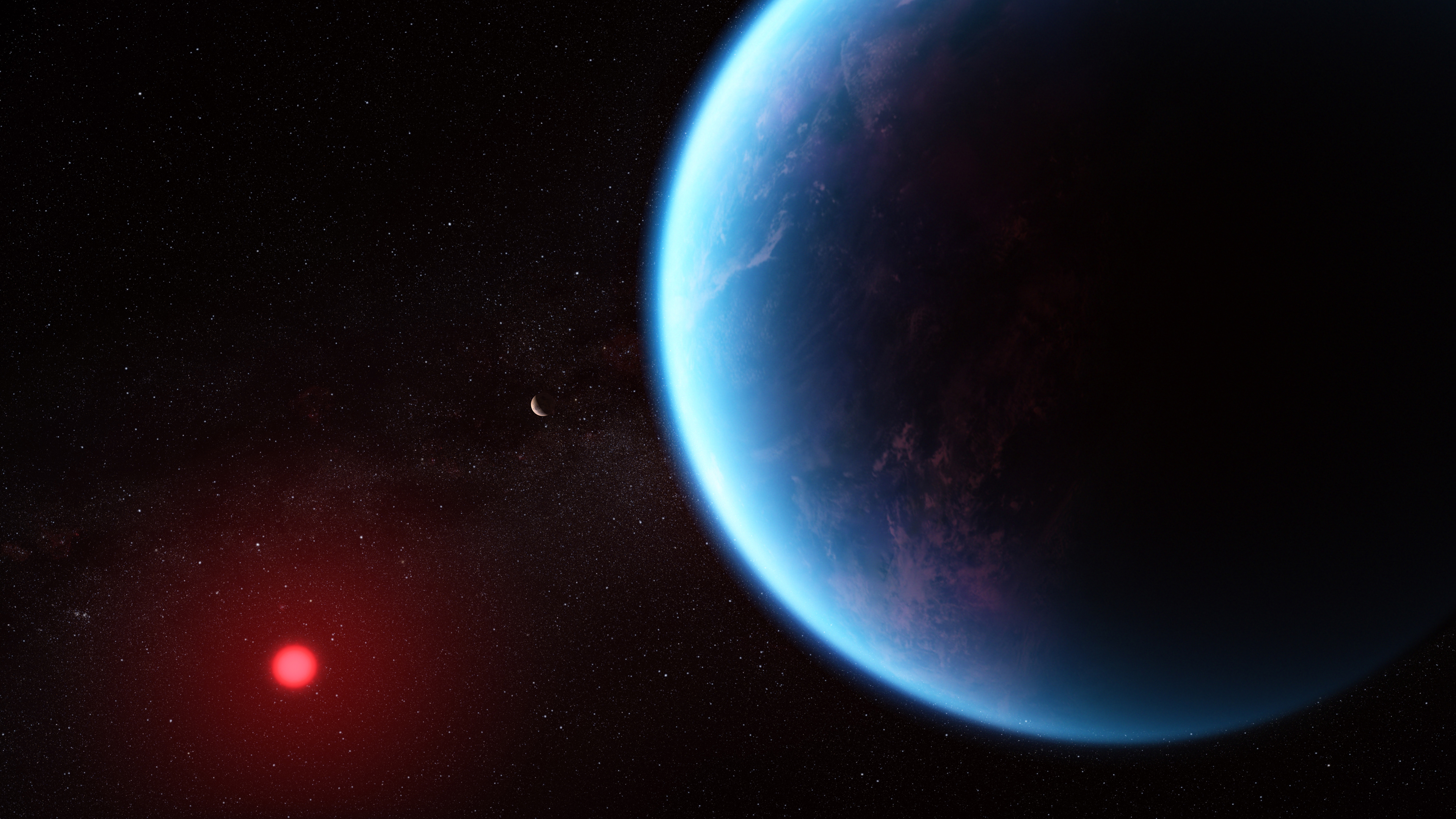What has the James Webb Space Telescope taught us?
Launched on Christmas Day 2021, the James Webb Space Telescope (JWST) has since pioneered astronomy providing us invaluable insights into the universe, so let's reflect and look at some of the key things the JWST has taught us.
The cutting-edge instruments of this space observatory have enabled us to peer deeper into the cosmos than ever before, unveiling fresh revelations about the mechanics of the universe. The captured visuals can be so comprehensive that they have been characterised as heralding a modern era in the field of astronomy.
The James Webb Deep Field – SMACS 0723
Amongst the first set of images sent back to us by the JWST, which included stunning shots of the Carina Nebula, Stephan’s Quintet, Southern Ring Nebula, and WASP-96 b, was SMACS 0723 (or the much more manageable James Webb Deep Field).

SMACS 0723 (James Webb Deep Field) - Image Credit: NASA, ESA, CSA, and STScl
This was not just a beautiful deep field encapsulation of galaxy cluster SMACS 0723, but was also humanity's deepest and sharpest infrared image of the distant universe to date. Teeming with thousands of galactic structures, the image housed some of the faintest objects ever observed – some dating to less than a billion years following the Big Bang. The image was captured by the Near-Infrared Camera (NIRCam) aboard the JWST, a composite created from data collected across various wavelengths over a span of 12.5 hours. This achievement pushed the boundaries of infrared observations to depths surpassing the previous crown-holder, the Hubble Space Telescope, in both quality and time.
Prelude to Supernova – WR 124
The JWST has also proven itself key to capturing some of the rarest moments in the universe in immense detail.

WR-124 Wolf-Rayet Class Star - Image Credit: NASA, ESA, CSA, and STScl
WR 124 sits a whopping 15,000 lightyears away in the constellation of Sagitta and, as you can see above, the JWST had no problem catching the Wolf-Rayet phase star teetering on the edge of going supernova in immortalising detail.
A Wolf-Rayet star is a massive and extremely hot type of star characterised by its strong stellar winds and high surface temperatures. These stars have typically exhausted their nuclear fuel and are in an advanced stage of their evolution. They are known for shedding large amounts of their outer layers into space, which contributes to their distinctive features. Wolf-Rayet stars play a crucial role in the evolution of galaxies and the production of heavy elements through their powerful stellar winds and eventual supernova explosions.
30 times the size of the Sun, WR 124 has shed around 10 solar masses worth of material so far ejecting the gasses violently, and rather spectacularly, which then cools to for cosmic dust which glows in the infrared light that the JWST loves.
The origin of cosmic dust, which can withstand the intense forces of a supernova explosion and contribute to the universe's "dust budget," is a matter of great interest to astronomers for several compelling reasons. Cosmic dust plays a pivotal role in the cosmos by providing shelter for newly forming stars, aiding in the formation of planets, and serving as a platform for the creation and aggregation of molecules, including the building blocks of life on Earth. Despite its fundamental importance, there is currently more dust in the universe than can be explained by existing theories of dust formation. The universe seems to have an excess dust budget – an impossibility.
The JWST offers exciting possibilities for scrutinising the intricate details of cosmic dust, which is best observed in the infrared wavelengths of light, a speciality of the JWST. It’s NIRCam can balance the brightness of WR 124's central star with the features of the fainter surrounding gas and combine it with the telescope's Mid-Infrared Instrument (MIRI) data which unveils the clumpy structure of the gas and dust nebula created by the material ejected from the star.
Before the JWST, astronomers who were fascinated by cosmic dust lacked the detailed information required to investigate questions related to dust production in environments like WR 124. They also couldn't determine whether the dust particles were sufficiently large and abundant to withstand a supernova explosion and make a substantial contribution to the overall cosmic dust budget. Now, thanks to Webb, these questions can be explored with real observational data.
Impossible galaxies - JADES-GS-z13-0
Finding impossibilities is well within the realm of the JWST too, demonstrating this feat when peering to the very edge of the observable universe. Webb made history back in April 2023 when it detected the oldest known galaxy as a part of the JWST Advanced Deep Extragalactic Survey (JADES).
The survey found four examples of these ancient galaxies ranging from approximately 300 million to 500 million years after the Big Bang when things looked much different. The oldest of these, and the most distant, was JADES-GS-z13-0 which has since been confirmed as the current crown holder.

Four ancient galaxies from the JADES Survey including GS-z13-0, the oldest known galaxy - Image Credit: NASA, ESA, CSA, and STScl
Once again, the JWST was able to utilise its cutting-edge NIRCam instrument to detect the object in stunning detail, considering the distance. During a single observation period spanning three days, totalling 28 hours of data collection, the research team gathered light from 250 faint galaxies. This enabled astronomers to analyse the spectral patterns created by the atoms within each galaxy. As a result, they obtained precise measurements of each galaxy's redshift and gained insights into the characteristics of the gas and stars within these galaxies.
The discovery of these objects, as well as newer ones since, and their scale has given them the informal title amongst astronomers of ‘universe breakers.’ This is due to the galaxies being far larger and more complex than what was believed to be possible at that early of a stage in the universe’s life. This fundamentally triggers scientists to reconsider the current model of the early universe, whilst also providing new data on the matter to explore their properties.
Pushing for the discovery of life – K2-18 b
JWST isn’t just limited to the analysis of massive galactic objects, it has also seen active use in the understanding of exoplanets in the hopes of better understanding the properties of these worlds.
In September 2023, NASA's James Webb Space Telescope conducted a study of K2-18 b, an exoplanet approximately 8.6 times the mass of Earth. This investigation has unveiled the existence of carbon-bearing molecules, notably methane and carbon dioxide, on the planet. Webb's findings contribute to recent research indicating that K2-18 b might fall into the category of Hycean exoplanets, which are characterised by the potential for having hydrogen-rich atmospheres and surfaces covered by vast water oceans.

An artists rendition of the exoplanet K2-18 b and it's host star, red dwarf K2-18 - Image Credit: NASA, ESA, CSA, and STScl
K2-18 b follows an orbit around the cool dwarf star K2-18, residing within the habitable zone of this star system. It's located at a distance of 120 light-years from Earth in the constellation Leo. This exoplanet, with a size falling between that of Earth and Neptune, presents a unique category not found within our own solar system. These 'sub-Neptunes' remain enigmatic to astronomers due to the absence of close counterparts, leading to ongoing debates about their atmospheric composition and nature.
The intriguing idea that K2-18 b might belong to the class of Hycean exoplanets has sparked interest among astronomers. These planets are considered promising candidates for the search for signs of extraterrestrial life.
Most interestingly, the JWST has observed a possible detection of dimethyl sulphide (DMS), a molecule that is only produced here on Earth by life. In particular, the majority of DMS on the Earth is produced by phytoplankton which occupy the upper sunlit layer of marine and freshwater bodies – something that is certainly possible given the ocean surface of K2-18 b
Final thoughts
So there we have it, a short run down of some of the best the James Webb Space Telescope has taught us. These are just a few examples of the breadth of knowledge the JWST is offering and, with the telescope expected to be above us for another couple decades, there is plenty more discoveries to be made. The JWST is a testament to humanities thirst for the unknown and little by little projects such as Webb are answering the questions of the universe. Who knows what it will discover next?


